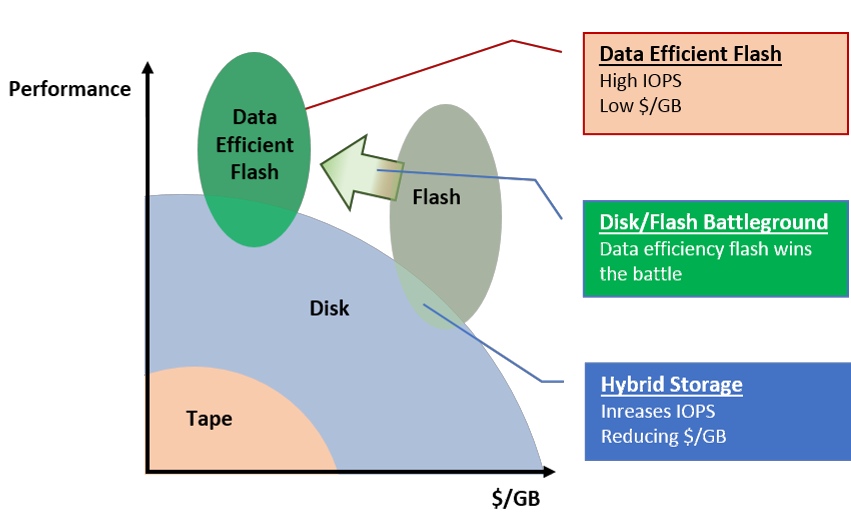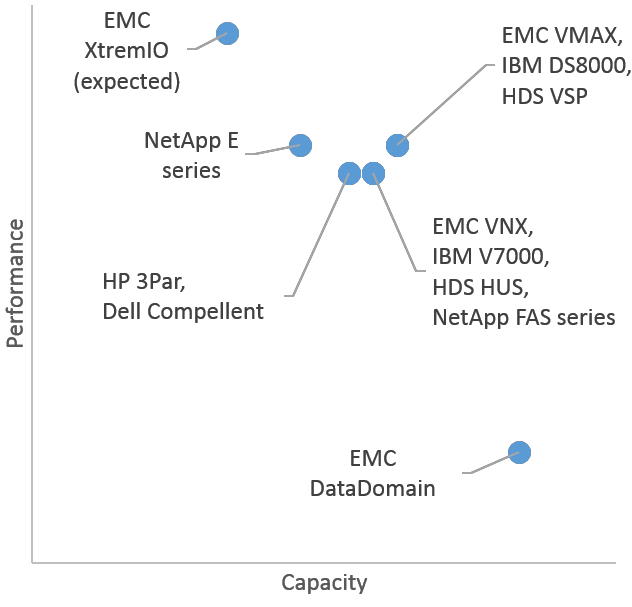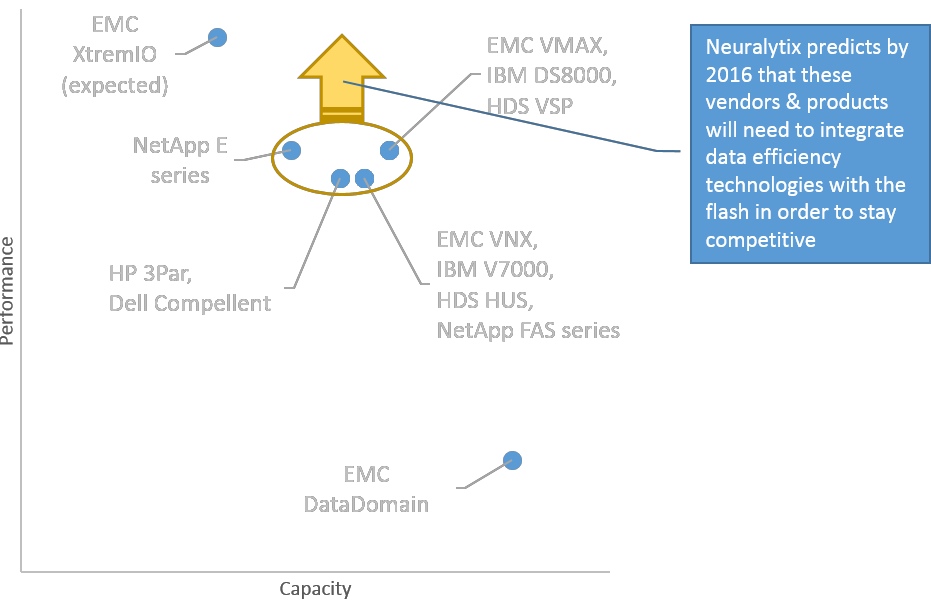War Between SSDs and HDDs Will Escalate Through 2016
SSD vendors have number of innate advantages for analyst Ben Woo.
This is a Press Release edited by StorageNewsletter.com on November 1, 2013 at 3:21 pmStorage Wars
Article posted by Ben Woo, MD, Neuralytix, Inc.
Current Overview
Not since rotating magnetic HDDs became economically viable in 1956 has there been such a war between storage media. NAND flash solid-state storage media is challenging the HDD as the “king” of storage.
Neuralytix believes that the war between SSDs and HDDs will escalate through 2016, with the challenger in the form of SSD array vendors intending to upend the storage industry.
SSD vendors have a number of innate advantages:
- These vendors do not have to make their systems backward compatible with previous generations of storage systems. This allows these vendors to be more agile and innovative with their approach of storage system design;
- Many of the innovations in these next generation all-flash storage systems are software driven (i.e. the value is not in the components themselves, but in the intelligent way software is used to deliver data services and storage management);
- The software driven approach allows these vendors to ride Moore’s Law by leveraging the multi-core, multi-socket CPU architectures found in low-cost servers;
- By using a solid-state storage medium, these storage systems can achieve performance that is at least one order of magnitude better than traditional HDD based storage systems; and
- Data efficiency software is the number one requirement to bring SSD costs below HDD storage.
Impact of Data Efficiency Flash

The Role of Data Efficiency
Data services such as block and file protocols, auto-tiering, snapshots, cloning, and replication are table stakes in this war. The secret weapon that will allow up-start vendors to hold their own will be their ability to achieve price parity with HDD based storage systems.
In the next two to five years, the only way flash-based storage vendors can challenge HDD-based storage systems on price is by way of data efficiency. The cost per unit of storage ($/GB) of HDDs is still 1/10the cost of NAND flash. However, data efficiency technologies (such as deduplication and/or compression) from a variety of vendors are showing data efficiency ratios that are over 10:1. The cost of SSD storage media is now coming in line with the cost of high-end HDDs.
Relative Performance to Capacity Ratio Across Various Storage Media Types

As this figure illustrates, while HDD systems and all SSD systems are polar opposites, a deduped SSD storage system has the capacity benefit of HDD systems and the performance benefits of an SSD system. Hybrid systems come close, but ultimately, a deduped SSD storage system is the optimal balance between performance and capacity for most workloads.
What the figure doesn’t illustrate is the relative cost factor. Traditional HDD storage systems are relatively low in cost; conversely, SSD storage systems are relatively high in cost. Again, a deduped SSD storage system approaches the relatively low cost of the traditional HDD storage system while still maintaining its superior performance.
When we map the relationship between the relative performance, capacity and cost, there is a clear winner: the data efficient all-flash storage system.
Neuraspective
Guerilla Warfare
This storage war is not a cold war where one storage superpower directly confronts another storage superpower.
Instead, the storage war is more like guerilla warfare. Smaller, more agile, companies are using technologies such as deduplication and compression as tactical weapons. They are not interested in massive battles, nor can they undertake them right now. The agile start-ups are fighting smaller battles and slowly eating away at the soft un-deduplicated underbelly of the superpowers.
The start-ups will ultimately force the larger, more established companies to join in. As mentioned earlier, this is not a battle of goliaths, but a classic case of Davids versus Goliaths, and the outcome could end up being as dramatic as Henry V’s victory at Agincourt.
Defensive Strategy
While the EMC VMAX, IBM DS8000, HDS VSP, HP 3Par and Dell Compellent all have compelling offerings, what differs is the relative cost factor. Neuralytix’s believes that Dell Compellent and HP 3Par are likely to be more cost effective against traditional mainframe capable competitors.
Neuralytix presents the following figure that shows the relative performance to capacity ratio of several storage systems from market leaders:
Comparison of Relative Performance to Capacity Ratios
of Various Storage Systems from Market Leading Vendors,
Logarithmic Scale on Both Axes

While these products offer some form of data efficiency technology by way of thin provisioning and tiering, the efficiency is focused on the less active data. In each case, performance gives way to capacity and cost.
Should EMC VMAX, IBM DS8000, HDS VSP, HP 3Par, Dell Compellent, EMC VNX, IBM V7000, HDS HUS, and NetApp FAS series have true inline, primary data optimization and also support solid state storage (through existing caching and tiering capabilities), these traditional market leaders could limit the incursion from all-flash upstarts including Pure Storage, Nimbus Data and Violin Memory.
Prediction
Neuralytix predicts that by 2016, aggressive inline data efficiency for tier 0 and tier 1 storage will not only be a desired feature, but a required one. Those vendors that integrate aggressive data efficiency technologies in higher storage tiers sooner rather than later will gain ground against those who lag. We advise all storage vendors to make primary data efficiency a high priority development project.














 Subscribe to our free daily newsletter
Subscribe to our free daily newsletter

